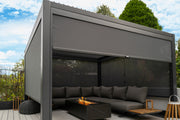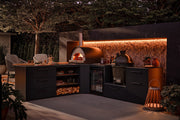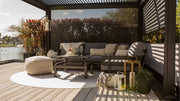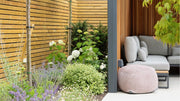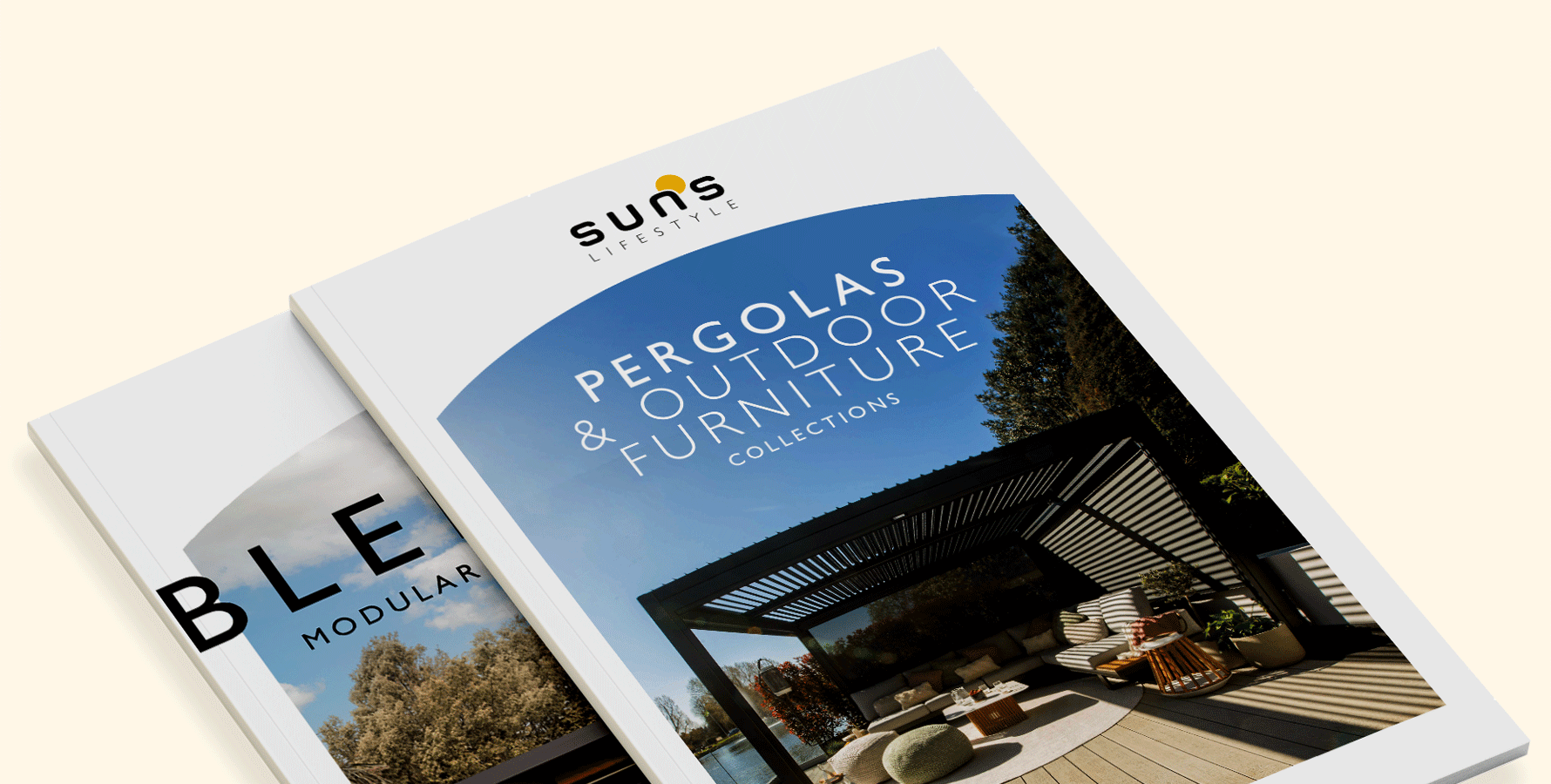Are pergolas weatherproof and watertight?
Pergolas may be a favourite outdoor feature for welcome shade in the summer and relaxing or dining alfresco. But when the inevitable British rain starts pouring down, are pergolas able to withstand the elements?
No pergola should claim to be 100% ‘watertight’ or ‘waterproof ‘- but you can help your pergola function at its best by keeping on top of easy maintenance tips and positioning correctly in the first instance. Our expert installation teams will be able to advise on the best orientation and positioning of your pergola.
While an open pergola may not be watertight, there are certainly design choices you can make to maximise weather protection and water resistance for year-round use. Read on to learn how to make your pergola as rain-ready as possible for our temperamental climate.
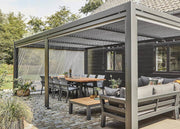
Keep the drainage channels free of leaves and debris, removing any blockages that might cause rainwater to overflow (much like the gutters on your house).
And during high winds, keep the louvers ajar and side screens pulled up to allow gusts to blow through and prevent any damage.
Installing a sloped roof on your pergola is one of the most effective ways to help water run off efficiently. Unlike flat roofs where water can pool, angled roofs allow rain and snow to slide down the incline.
The steeper the pitch of the roof, the faster water can shed. A pitch between 15-30 degrees is ideal for pergolas to balance aesthetics with proper water runoff.
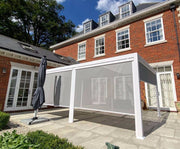

Louvered panels or adjustable slats on pergola roofs also promote water runoff. Our louvered pergolas work via a simple winding mechanism to open and close the vented shutters so you can enjoy a fully weatherproof space in moments.
Any rainwater which accumulates is drained away down perfectly engineered channels in the legs of the pergola for a seamless and practical design.
If you’re looking for something completely automated, our retractable roof pergolas are designed with the latest technology to protect you against the elements.
While this style of pergola comes with a higher price point, due to the complex motor system, it’s a wonderful way to elevate your garden space and enjoy a fully open pergola in the summer or completely insulated space in the colder months.

While completely enclosing a pergola diminishes its open, airy appeal, optional side screens offer a good compromise.
Providing shade and shelter from the wind and rain, strategically placed panels on one or more sides of the pergola block rain and splash back while still allowing light through.
Our roof and side screens are made from Textilene, which is a PVC-coated polyester yarn that won’t stretch or warp and is highly durable. Mildew-resistant, stable and flame-retardant, it provides superior performance for peace of mind.
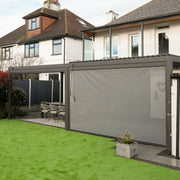
DURABLE METAL CONSTRUCTION
Using weather-resistant metals prevents pergola damage from moisture. Unlike wood, which requires regular maintenance to keep it protected, quality metals like high grade aluminium do not warp, rot or corrode when exposed to outdoor elements like rain, humidity and sunshine. They maintain their integrity and withstand soggy conditions for lasting water protection.
Our top pick for all Suns Lifestyle pergolas is industrial-grade aluminium, as it delivers exceptional performance and can be powder coated in a range of UV-resistant colours.
Plus, it’s a very low maintenance material so you can enjoy your pergola for years to come without needing to spend extra time taking care of it.
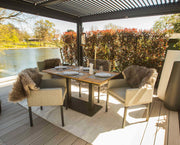
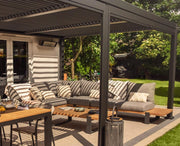
Finally, adding a pergola to a veranda, balcony or raised platform may require planning permission due to the increase in height, and because it will need to be built in compliance with Building Regulations.
By adding a pergola on top of an existing platform, you’re essentially raising the overall structure’s height.
This goes beyond the typical pergola limits set by permitted development, which usually restrict height.
Raising the height of an existing structure like a veranda again alters the external appearance, which could necessitate permission.
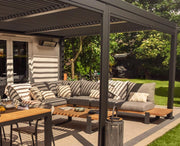
Explore our range of pergolas and furniture collections, to create your perfect summer set-up.

